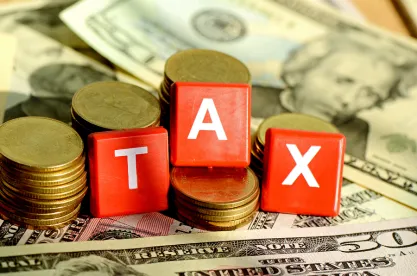On January 19, 2017, the Internal Revenue Service (IRS) issued Rev. Proc. 2017-19, 2016-6 I.R.B. (the Rev. Proc.), providing a safe harbor (the Safe Harbor) under which it will not challenge the tax treatment of an Energy Savings Performance Contract Energy Savings Agreement (ESPC ESA) as a service contract under Section 7701(e)(3). While the application of the guidance is limited to the ESPC ESA context, the Rev. Proc. nonetheless provides potential insight into the IRS’s views of other power purchase agreements for the purchase of renewable energy generally.
Background
42 U.S.C. § 8287 authorizes a federal agency (FA) to enter into an ESPC ESA with an energy service company (ESCO) for the purpose of achieving energy savings. The statute, and the ESPC ESA structure in particular, was enacted to encourage FAs to invest in onsite renewable energy generation projects. The ESPC ESA structure is governed by requirements in § 8287 and guidance issued by the Office of Management and Budget (OMB). Under the typical ESPC ESA structure, the ESCO installs, owns and operates the renewable energy generating property at the federal site for the term of the contract. The FA purchases energy generated from the project from the ESCO, and pays the value of its energy savings to the ESCO for the term of the contract.
Under 42 U.S.C. § 8287 and the OMB guidance, the term of the ESPC ESA cannot exceed 25 years, and title to the renewable energy generation asset must transfer to the FA at the end of the ESPC ESA term. To facilitate the purchase, the ESCO must set aside a portion of the ESPC ESA payments into a reserve account for the FA’s future purchase of the generating asset. Accordingly, the amount charged by the ESCO includes both the price of energy and the defeasance amount, and cannot exceed the energy savings under the project. This structure facilitates investment into renewable energy assets by the FA without requiring a significant upfront expenditure.
In 2016, the US Department of Energy (DOE) requested comments on the ESPC ESA program because of market reluctance to pursue these projects. The DOE determined that there was concern that the reserve account and purchase obligation, described above, could adversely affect the treatment of the ESPC as a service contract under Section 7701 for tax purposes, jeopardizing the availability of the Section 48 investment tax credit (the ITC). The ITC is generally not available if the relevant project is “used” by governmental entities, as discussed further below.
Section 7701
Section 7701(e) provides rules to determine, for federal income tax purposes, whether a contract that purports to be a service contract should in fact be treated as a lease of property. Section 7701(e)(1) provides factors that should be taken into account for determining whether a service contract should be treated as a lease. Notwithstanding the general rule of Section 7701(e)(1), Section 7701(e)(3) and (4) provide that a purported service contract with respect to an alternative energy facility will be respected as a service contract, unless any of the following applies:
(1) The service recipient operates the facility;
(2) The service recipient bears any significant financial burden if there is non-performance under the contract;
(3) The service recipient receives any significant financial benefit if the operating costs of such facility are less than the standards of performance or operation under the contract; or
(4) The service recipient has an option or obligation to purchase all or part of the facility at a fixed and determinable price, other than for the fair market value of the facility.
An “alternative energy facility” means a facility producing electrical or thermal energy if the primary energy source for the facility is not oil, natural gas, coal or nuclear power.
Responses to the DOE’s requests for comments stated a concern that the mandatory defeasance and purchase obligation could adversely affect the treatment of the ESPC ESA under Section 7701(e). If a service contract under the ESPC ESA program is not respected, the IRS could treat the FA as the lessee of the energy generating equipment, which would make the project ineligible for the ITC under Section 50(b)(4)(A)(i). Section 50(b)(4)(A)(i) prohibits the use of ITC projects by governmental entities.
Safe Harbor under Rev. Proc. 2017-19
In response to these concerns, the IRS issued the Safe Harbor in the Rev. Proc. under which the IRS will not challenge the treatment of a ESPC ESA as a service contract under Section 7701(e)(3). The Safe Harbor requirements are as follows:
(1) The total term of the ESPC ESA cannot exceed 20 years in length. The term must be consistent with and appropriate for the scope and scale of the renewable project.
(2) The ESPC ESA must satisfy the requirements of 42 U.S.C § 8287 and the OMB guidance.
(3) Under no circumstances will the FA attempt to operate the renewable energy generation asset. In the event of a shutdown or mechanical issue, the FA will immediately notify the ESCO or its designated contractor.
(4) The ESCO bears all financial risk for non-performance, except to the extent such non-performance is attributable to a temporary shutdown of the facility for repairs, maintenance or capital improvements.
(5) The contract price for electricity will not be reduced if operating costs should diminish.
(6) The FA may have the option to purchase, or may be required to purchase, the renewable energy generation asset at the end of the contract term, for its fair market value at the time of the purchase.
The Rev. Proc. states that the Safe Harbor applies only to an ESPC ESA between an ESCO and a FA for the provision of electricity through an alternative energy facility, and the Rev. Proc. may not be relied upon, in whole or part, for any other kind of transaction.
The Rev. Proc. provides an example of the application of the Safe Harbor. In the example, the contract term is 20 years and the FA will purchase the renewable energy generation asset at its fair market value as appraised at the time of the sale by the end of the contract term. To ensure that the reserve account has sufficient funds for the purchase at the end of the contract term, there may be periodic reappraisals of the assets and contract modifications (if and as necessary).
Significance of the Rev. Proc.
The Safe Harbor generally tracks the requirements for treatment as a service contract under Section 7701(e)(4), but with one notable addition: under the Safe Harbor, the contract length cannot exceed 20 years. Based on our review of the Rev. Proc., the DOE’s requests for comments and the responses thereto, it is unclear why the IRS introduced the 20-year limitation. It is also unclear why the Safe Harbor notes that there may be a purchase option, when the ESPC ESA program requires the sale to the FA at the end of the contract term.
Further, the Rev. Proc.’s effectiveness is uncertain in light of the regulatory freeze announced by the Trump administration in a White House memorandum (“Regulatory Freeze Pending Review”) on January 20, 2017. Specifically, it is unclear whether the memorandum places a “freeze” on sub-regulatory guidance such as the Rev. Proc. The Rev. Proc. was intended to be effective for transactions entered into on or after the date of its publication in the Internal Revenue Bulletin, but was not published prior to the announcement of the regulatory freeze.
Adding to the ambiguity surrounding the Rev. Proc., it has uncertain relevance to contracts outside the ESPC context for the purchase of energy from renewable energy generation assets. Although the Rev. Proc. is limited to ESPC ESA contracts entered into under 42 U.S.C. § 8287 with a mandatory defeasance and purchase obligation, it raises questions as to whether the Safe Harbor—and the 20-year contract term limitation in particular—reflects the IRS’s views towards renewable energy contracts outside the ESPC context. We will be following this issue with interest to see if the Rev. Proc. survives the regulatory freeze or if the IRS otherwise speaks on this subject.






 />i
/>i
